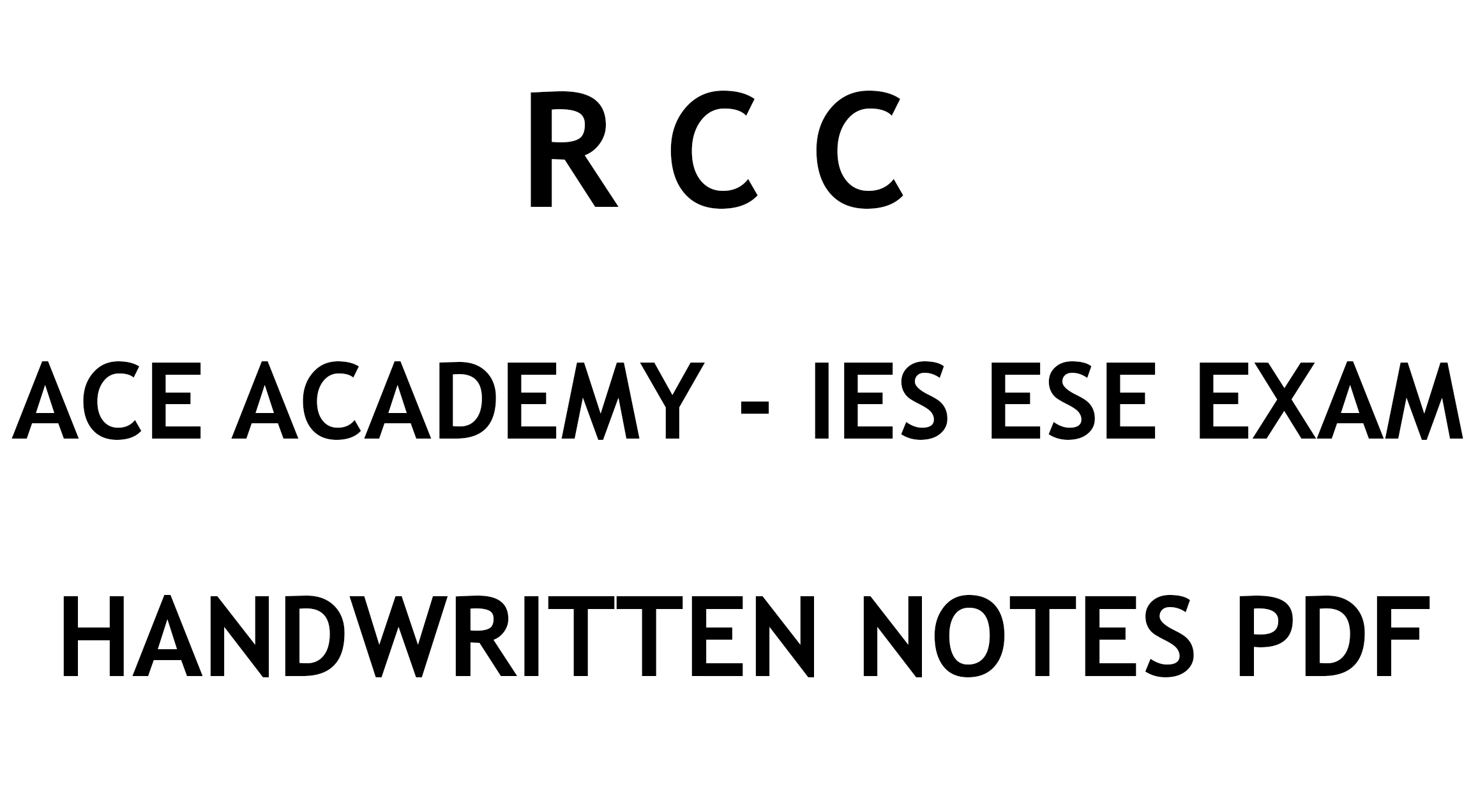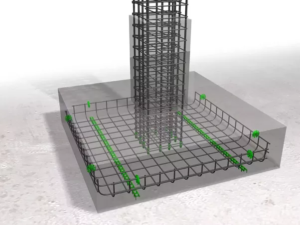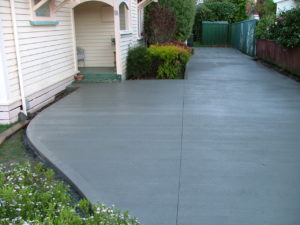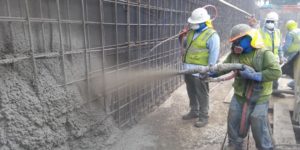
RCC
ACE ACADEMY IES ESE HANDWRITTEN CLASSROOM NOTES
ENGINEERING SERVICES GOVT EXAMINATION NOTES
FREE DOWNLOAD PDF
RCC IES ESE Ace Academy Handwritten Notes Free Download PDF
PLEASE NOTE : MOST OF THE PDF’S AVAILABLE IN THE INTERNET WITH THE NAME OF IES ACE ACADEMY NOTES ARE FAKE. FOR THE SAKE OF INCREASING THEIR WEBSITE POPULARITY/TRAFFIC, FEW WEBSITES ARE ALLEGEDLY PROVIDING SOME USELESS MATERIALS WITH THE NAME OF IES ACE ACADEMY NOTES WHICH IN RETURN MIGHT RUIN STUDENT’S VALUABLE MARKS. TO HELP THE STUDENTS WHO ARE WORKING THEIR LEVEL BEST TO CRACK THE RANKS, WE ARE PROVIDING ONLY VERIFIED ACE ACADEMY IES NOTES HERE. BUT HOWEVER THERE MIGHT BE SOME MANUAL ERRORS IN THE CONTENT OF THIS BOOK
RCC IES ESE Ace Academy Handwritten Notes Free Download PDF
Reinforced Concrete Structures
That concrete is a common structural material is, no doubt, well known. But, how common it is, and how much a part of our daily lives it plays, is perhaps not well known — or rather, not often realised. Structural concrete is used extensively in the construction of various kinds of buildings, stadia, auditoria, pavements, bridges, piers, breakwaters, berthing structures, dams, waterways, pipes, water tanks, swimming pools, cooling towers, bunkers and silos, chimneys, communication towers, tunnels, etc. It is the most commonly used construction material, consumed at a rate of approximately one ton for every living human being. “Man consumes no material except water in such tremendous quantities”

Plain Concrete
Concrete may be defined as any solid mass made by the use of a cementing medium; the ingredients generally comprise sand, gravel, cement and water. That the mixing together of such disparate and discrete materials can result in a solid mass (of any desired shape), with well-defined properties, is a wonder in itself. Concrete has been in use as a building material for more than a hundred and fifty years. Its success and popularity may be largely attributed to (1) durability under hostile environments (including resistance to water), (2) ease with which it can be cast into a variety of shapes and sizes, and (3) its relative economy and easy availability.

The main strength of concrete lies in its compression-bearing ability, which surpasses that of traditional materials like brick and stone masonry. Advances in concrete technology, during the past four decades in particular, have now made it possible to produce a wide range of concrete grades, varying in mass density (1200−2500 kg/m3) and compressive strength (10 −100 MPa).

Concrete may be remarkably strong in compression, but it is equally remarkably weak in tension! [Fig. 1.6(a)]. Its tensile ‘strength’ is approximately one-tenth of its compressive ‘strength’. Hence, the use of plain concrete as a structural material is limited to situations where significant tensile stresses and strains do not develop, as in hollow (or solid) block wall construction, small pedestals and ‘mass concrete’ applications (in dams, etc.)
DOWNLOAD LINK : RCC IES ESE Ace Academy Handwritten Classroom Notes Free Download PDF
PASSWORD : CivilEnggForAll
OTHER USEFUL LINKS FROM CIVILENGGFORALL
STRUCTURAL ANALYSIS ACE ACADEMY IES EXAM NOTES : CLICK HERE
STRENGTH OF MATERIALS ACE ACADEMY IES EXAM NOTES : CLICK HERE
TRANSPORTATION ENGINEERING ACE ACADEMY IES EXAM NOTES : CLICK HERE
HYDROLOGY ACE ACADEMY IES EXAM NOTES : CLICK HERE
IRRIGATION ACE ACADEMY IES EXAM NOTES : CLICK HERE
SURVEYING ACE ACADEMY IES EXAM NOTES : CLICK HERE
MATHS MADE EASY HANDWRITTEN NOTES : CLICK HERE
REASONING AND APTITUDE MADE EASY GATE HANDWRITTEN NOTES : CLICK HERE
OPEN CHANNEL FLOW MADE EASY GATE HANDWRITTEN NOTES : CLICK HERE
ENGINEERING MECHANICS MADE EASY GATE HANDWRITTEN NOTES : CLICK HERE

Leave a Reply